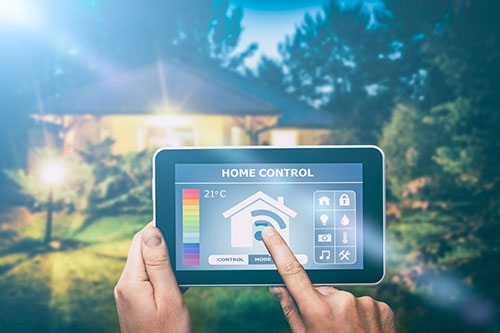With smart home devices gaining widespread popularity throughout the country, bad actors are gaining more opportunities to gain access to people’s homes and personal information. If you are building a home with smart home gadgets, you need to encourage your clients to safeguard their devices and network using the following tactics.
Consistently update your gadgets. Unlike macOS or Windows, smart home gadgets do not automatically seek out updates and install them in the background. In many cases, they may not be connected to the Internet at all. It is a homeowner’s responsibility to check for updates, which often include patches that guard against newfound hacking techniques. Encourage your clients to check any accompanying smartphone apps to see if there are updates available for their smart home devices. They can also check the manufacturer’s website to see if the company has discovered any recent security exploits.
Check all the settings on each device. Your clients should not just set and forget their smart home features. Whether it’s a refrigerator that knows when they are out of milk or lights they can control from their smartphones, your clients should explore settings on each device, so they understand everything each device can do. If a gadget doesn’t need access to the Internet, encourage them to disconnect it. If the homeowner needs a password to access the device, tell them to choose one that’s difficult to guess and remind them to never use the default password that came with a device. Since most smart home devices are relatively intuitive, they shouldn’t have too much trouble configuring the settings. Tell your clients to pay special attention to any default privacy and security settings and consider altering them, since many of these are set to benefit the manufacturer more than the user.
Buy from reputable brands. When choosing smart home devices, be wary who you buy from. Although big brands, such as LG and Samsung, aren’t impervious to hacking, they are much more likely to correct an issue with an update if a new security exploit is discovered. Before buying any new smart home gadget, research the manufacturer to make sure it has robust security measures in place. If it’s a relatively new company, your clients could be in big trouble if the company behind the hardware goes under. With this in mind, it’s a really good idea to buy specific smart home products from recognizable brands that are unlikely to fold. This would include voice-activated garage doors, smart locks and any other feature directly related to a home’s security.
Pay special attention to routers. Since the router is like a gateway to most smart home gadgets, your clients should try to make it as secure as possible. This means changing the default username and password to something unique. It also means ensuring that the router is running the latest firmware upgrades. Your clients should also prevent devices from connecting to the Internet, unless they absolutely have to in order to properly function. Finally, encourage your clients to be wary of any smart home gadget that asks for permission to alter the settings on a router, which could leave it vulnerable to hackers.
Double up protection. Encourage the homeowner to use two-factor authentication – such as a one-time code sent to a smartphone – to keep the bad actors out of their smart home accounts.
Avoid public Wi-Fi. Your clients may be tempted to manage their smart home devices while sitting in a coffee shop on the other side of town. If they are using public Wi-Fi, however, they could leave their systems vulnerable to security issues. Instead, tell your clients to use a VPN, which offers layers of security and privacy features for both home and public Wi-Fi.
Protect your company’s reputation while adding valuable selling points to your builds with 2-10 Structural Warranties for Home Builders. Learn more today!








